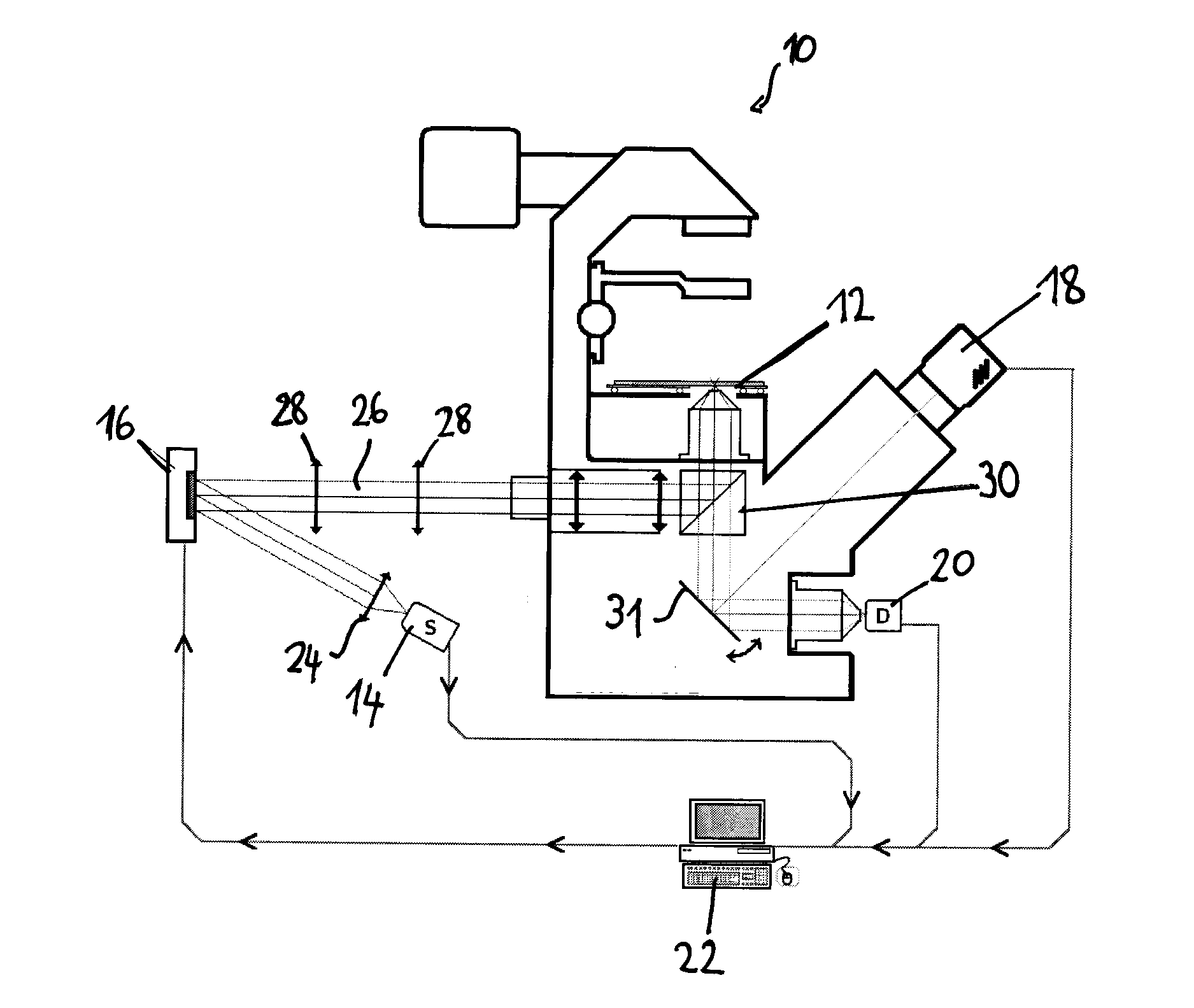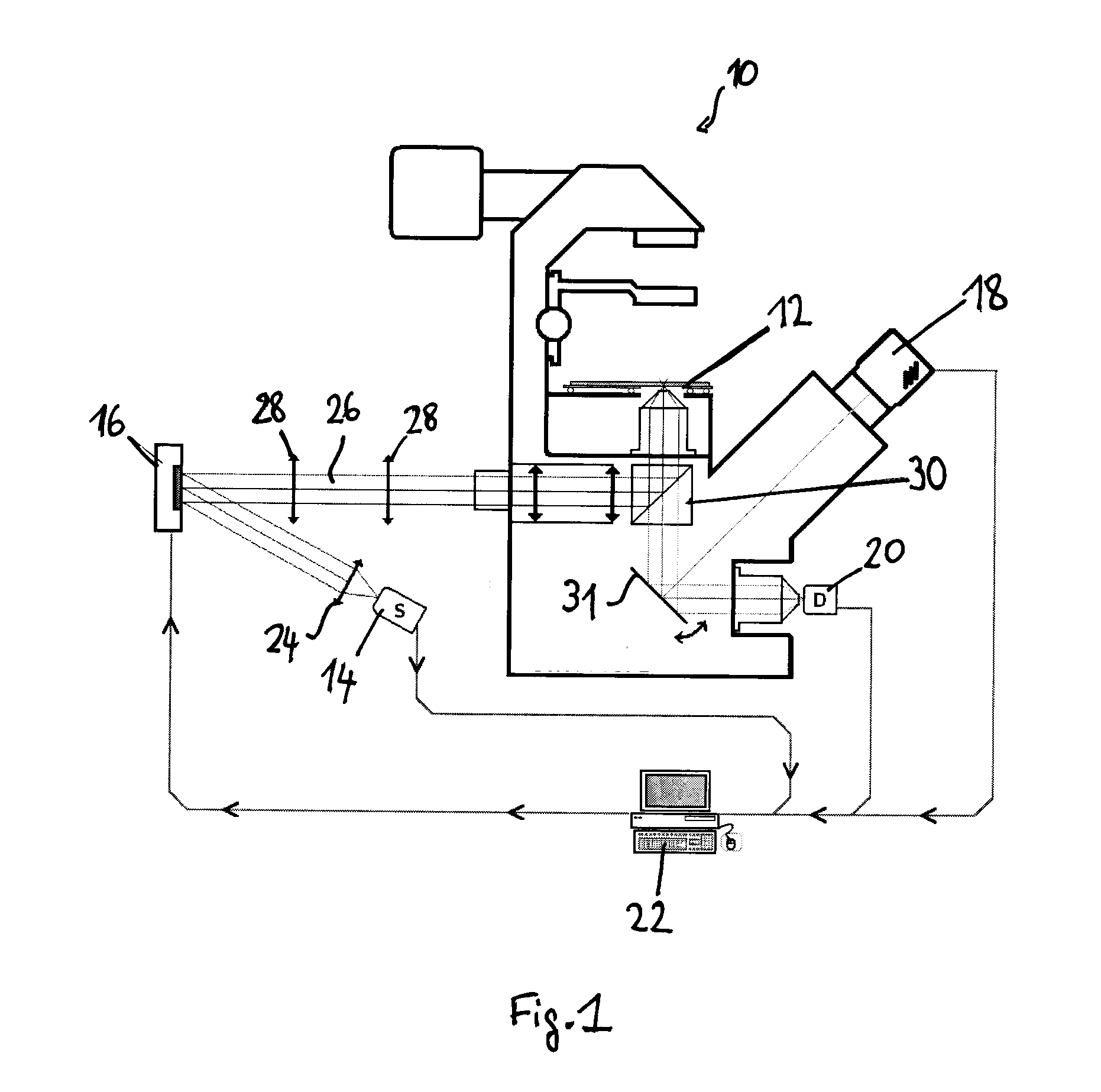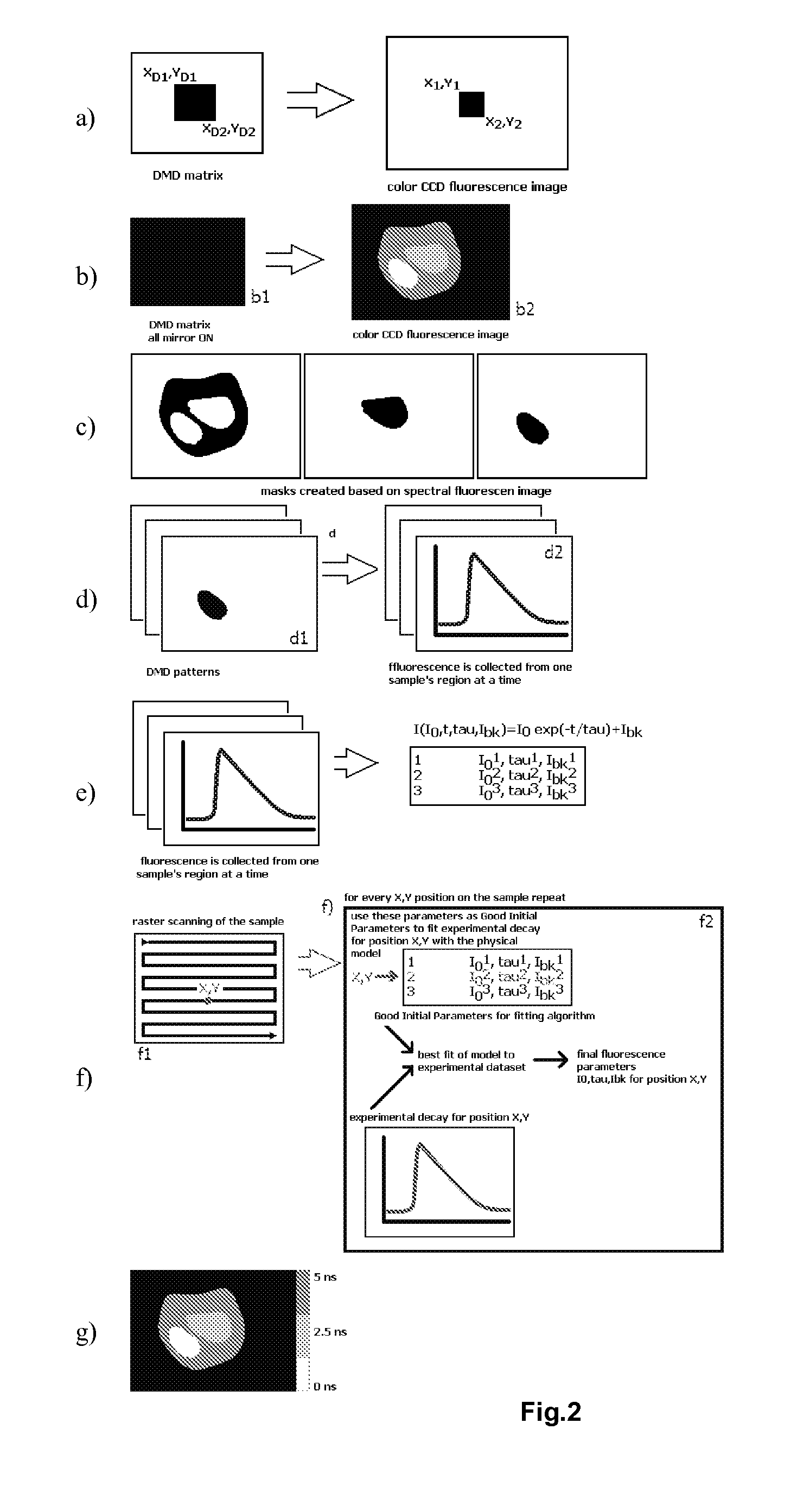Method of fluorescence imaging
a fluorescence imaging and lifetime technology, applied in material analysis, instruments, computer peripheral equipment, etc., can solve the problems of inacceptable low light-level applications, slow and cumbersome passband transmission efficiency, and inability to achieve low-light-level applications, and achieve faster and more accurate data analysis. , good initial parameters
- Summary
- Abstract
- Description
- Claims
- Application Information
AI Technical Summary
Benefits of technology
Problems solved by technology
Method used
Image
Examples
Embodiment Construction
[0048]A preferred embodiment of the present method will now be described in more detail, as applied to raster-scanning FLIM with prior fluorescence image acquisition and analysis, in order to discriminate different structural and functional sample regions. The discrimination is performed by segmentation of a wide field fluorescence image (whole sample) based on fluorescence spectral and spatial information gained with any spectrally resolved imaging method. The goal of the method is to supply fluorescence decay fitting algorithms (in the case of FLIM) or fluorescence spectra fitting algorithms (in the case of HSI) with trained Good Initial Parameters to increase the accuracy and speed of FLIM / HSI image reconstruction.
[0049]A preferred experimental setup for this method is illustrated in FIG. 1. It comprises e.g. microscope-type device 10 on which the sample to be analysed is supported on a stage, a light source 14 emitting excitation light—e.g. a pulsed laser diode (Pmax=1 mW, tFWHM...
PUM
 Login to View More
Login to View More Abstract
Description
Claims
Application Information
 Login to View More
Login to View More - R&D
- Intellectual Property
- Life Sciences
- Materials
- Tech Scout
- Unparalleled Data Quality
- Higher Quality Content
- 60% Fewer Hallucinations
Browse by: Latest US Patents, China's latest patents, Technical Efficacy Thesaurus, Application Domain, Technology Topic, Popular Technical Reports.
© 2025 PatSnap. All rights reserved.Legal|Privacy policy|Modern Slavery Act Transparency Statement|Sitemap|About US| Contact US: help@patsnap.com



